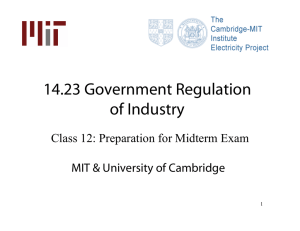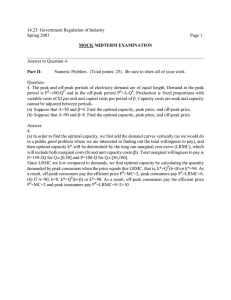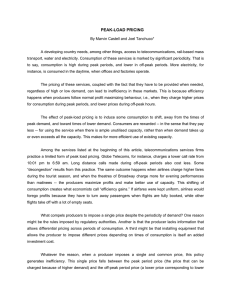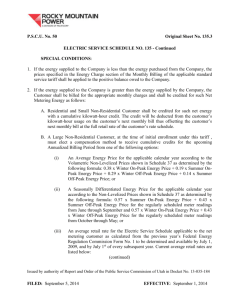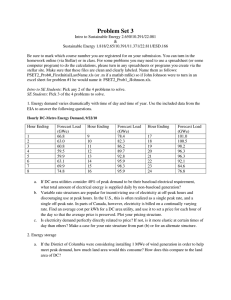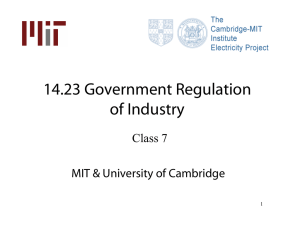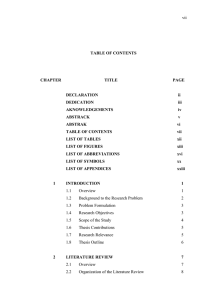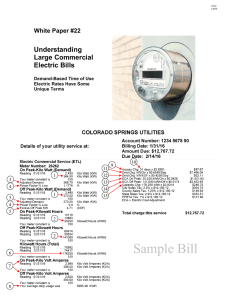Document 13572857
advertisement
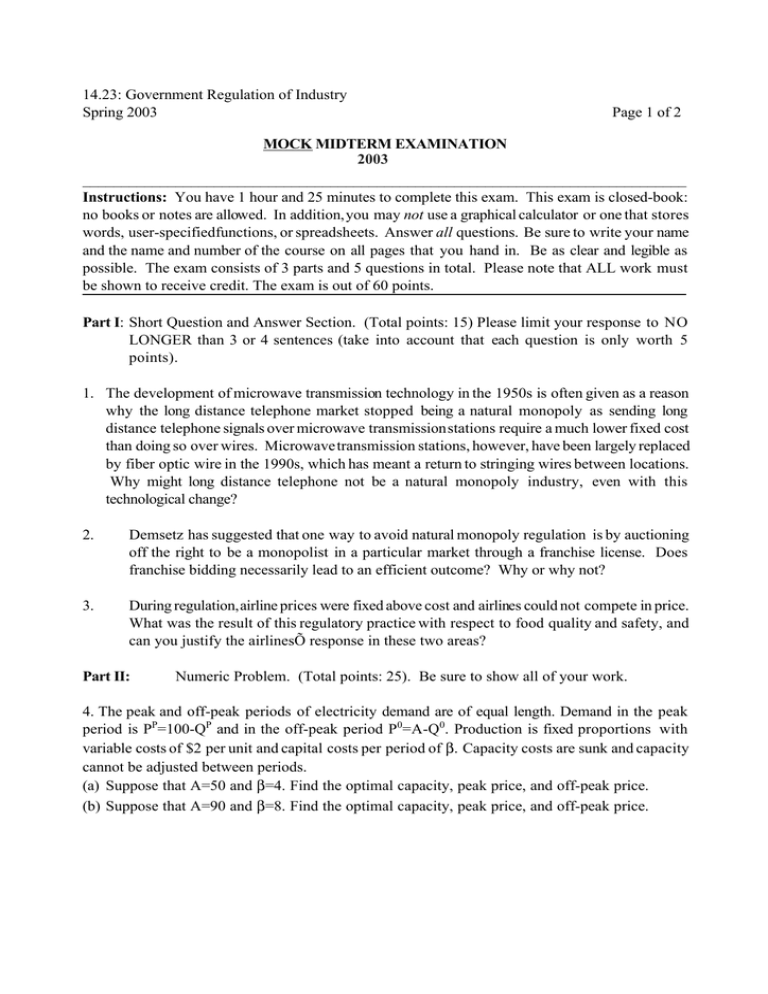
14.23: Government Regulation of Industry Spring 2003 Page 1 of 2 MOCK MIDTERM EXAMINATION 2003 ______________________________________________________________________________ Instructions: You have 1 hour and 25 minutes to complete this exam. This exam is closed-book: no books or notes are allowed. In addition,you may not use a graphical calculator or one that stores words, user-specifiedfunctions, or spreadsheets. Answer all questions. Be sure to write your name and the name and number of the course on all pages that you hand in. Be as clear and legible as possible. The exam consists of 3 parts and 5 questions in total. Please note that ALL work must be shown to receive credit. The exam is out of 60 points. Part I: Short Question and Answer Section. (Total points: 15) Please limit your response to NO LONGER than 3 or 4 sentences (take into account that each question is only worth 5 points). 1. The development of microwave transmission technology in the 1950s is often given as a reason why the long distance telephone market stopped being a natural monopoly as sending long distance telephone signals over microwave transmissionstations require a much lower fixed cost than doing so over wires. Microwavetransmission stations, however, have been largely replaced by fiber optic wire in the 1990s, which has meant a return to stringing wires between locations. Why might long distance telephone not be a natural monopoly industry, even with this technological change? 2. Demsetz has suggested that one way to avoid natural monopoly regulation is by auctioning off the right to be a monopolist in a particular market through a franchise license. Does franchise bidding necessarily lead to an efficient outcome? Why or why not? 3. During regulation,airline prices were fixed above cost and airlines could not compete in price. What was the result of this regulatory practice with respect to food quality and safety, and can you justify the airlinesÕ response in these two areas? Part II: Numeric Problem. (Total points: 25). Be sure to show all of your work. 4. The peak and off-peak periods of electricity demand are of equal length. Demand in the peak period is PP=100-QP and in the off-peak period P0=A-Q0. Production is fixed proportions with variable costs of $2 per unit and capital costs per period of β. Capacity costs are sunk and capacity cannot be adjusted between periods. (a) Suppose that A=50 and β=4. Find the optimal capacity, peak price, and off-peak price. (b) Suppose that A=90 and β=8. Find the optimal capacity, peak price, and off-peak price. 14.23: Government Regulation of Industry Spring 2003 Part III: Page 2 of 2 Short Essay (Total points: 20). 5. In 2000 and 2001 a major round of auctions for licenses to operate third generation (3G) mobile phone networks took place in Europe. The licenses gave the holders the right and responsibility to invest in 3G infrastructure and exclusive use of the auctioned spectrum for a fixed number of years. Discuss these auctions in terms of (1) the motivations for allocating radiospectrum via auctions (2) how they were supposed to work (3) the theoretical and practical problems that may arise. Try to use specific examples and evidence from class to support your views.
